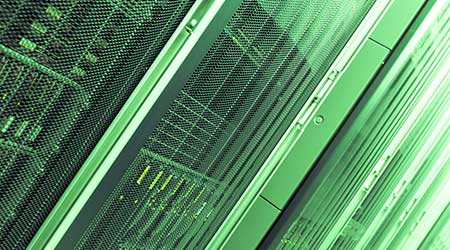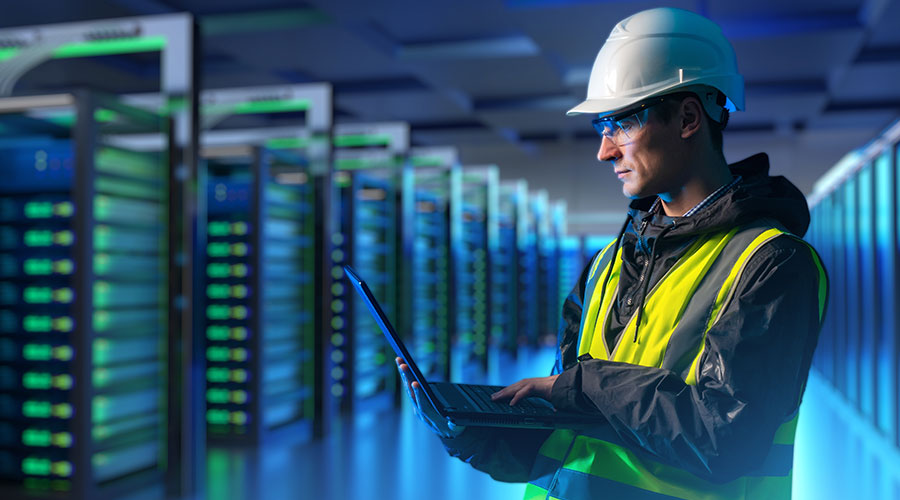How To Leverage Existing Infrastructure For Data Center Efficiency
Using existing metering and powering monitoring in a data center can be the key to turning an energy hog into an energy efficient facility.
OTHER PARTS OF THIS ARTICLEPt. 1: This Page
Already considered one of the most energy-intensive building types in the United States, data centers are on a fast growth trajectory as information technology continues to boom. Tracking energy usage has long been a standard operating procedure, but since uptime is the greatest imperative, many owners and operators consider energy usage simply a cost of doing business. For some, times are changing, particularly for those involved in renting space either as wholesale or as retail co-location providers. In some cases, owners are splitting the utility bills passed on to tenant clients based on rentable square feet or rentable kilowatts. Others may have clients that are strong supporters of a sustainable environment and require transparency into the facility’s power usage effectiveness (PUE).
While many manufacturers offer dedicated power management packages that include meters and software solutions, your data center may already have essential software or basic infrastructure in place that can aid in managing the facility’s energy use.
Establish the metering
The type of metering required for the upper distribution path of a data center’s electrical system has been fairly standard for about two decades. Main utility meters at switchgear and at UPS system inputs or outputs have been standard for some time. These meters use the standard communication protocol known as Modbus and can easily pull valuable information associated with daily data center operations, including demand in kilowatts (kW) and consumption in kilowatt-hours (kWh). When metering kW, kWh, and other power data, current load balancing and power factor data are all read into a system for an overall operational strategy, which is referred to as an electrical power monitoring system (EPMS). For example, an EPMS can include data such as generator information, breaker position information, and UPS alarms.
If you are renting space such as racks, partial racks or even rooms, then two or more of your clients may feed from a single UPS output. This can cause an inaccurate measure of an individual client’s energy use based on a UPS output meter. Power distribution units, which include output meters, are used in some data centers. In an ideal situation, each power distribution unit is dedicated to a single client, but this is not always practical and a client may only be using one or two circuits. In such instances, a number of branch circuit monitoring options are available that can be easily installed and can monitor the power of an individual output circuit to a rack.
Extracting the data
Once the meters have been located, placed, or installed, retrieving the data should be straightforward; a systems integrator can make the necessary connections. Every modern control or building management system understands the Modbus protocol (as well as SNMP, which is a server based protocol available from some meters) and can extract the data with minimal effort. If the installed system is not capable of making that information readily available, then the system is likely more than 10 or 15 years old. If that’s the case, give serious to consideration to whether the system should be running your mission critical operations.
Once in place, the information can be “polled” or read into the BAS, similar to other values such as temperature or humidity. At that point, it can be trended and archived, and have simple math performed upon it.
PUE is one of the most common data points to track, as it is simply the total facility power usage divided by the IT or server power usage. This data gives the owner or operator some semblance of the inefficiencies in the design or operations of the facility. In short, what percent of energy goes to the server racks versus the percentage of energy that goes the facility infrastructure, for things like cooling and humidity control operations, wasted in heat due to transformers and UPS equipment? The data point is easily tracked simply as the division of two metered kW values, or in some cases the addition of several utility meters divided by the addition of several UPS output meters.
A second common data point is the consumption of an individual room, rack, or process. This information often is used for two specific purposes: to bill end-use clients and to form cost model data such as dollars per transaction or kilowatts per download.
Regardless of the desired data points, the trend is to make them viewable through a cloud application, which should be very feasible. Building management systems that are less than 10 or 15 years old will have Web Services capabilities. This allows third party software applications (i.e., tenant portals or dashboards) to easily poll for the stored data points, and present the information in useful graphical format to a cloud-based web application. A facilities system integrator should be able to provide you with information on how to access this data, particularly when he or she is engaged from the outset.
This extraction and presentation of data may be seen as a low level DCIM or data center infrastructure management system. In other words, DCIM is the collection and display of data about your facility in a meaningful and useful fashion.
Working in the confines of your existing equipment can bring forth valuable operating data from already installed hardware. The importance of this data becomes more relevant as industry competition increases and energy use become more than just another cost of doing business. Whether you are renting space and figuring how to bill your customers, or are concerned about operational efficiency, do not wait until it is too late to put together an impactful electrical power and infrastructure monitoring system.
Michael Phillips is integration business manager at Envise, a national building systems integrator. He can be reached at mphillips@enviseco.com.
Email comments and questions to greg.zimmerman@tradepress.com.
Related Topics:












